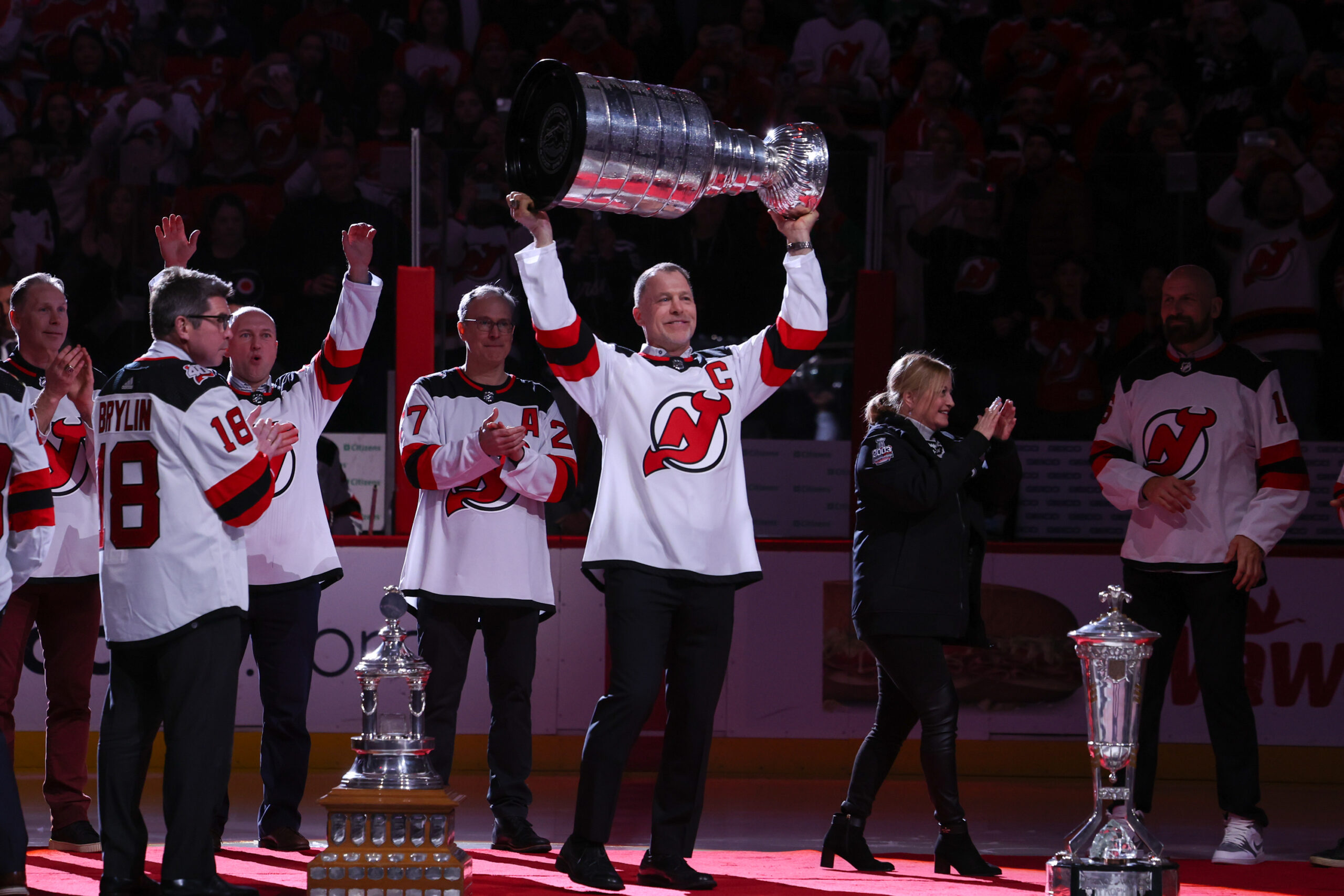New Jersey Devils defence has evolved throughout their history, going from the trap era to modern transitional play.
The Evolution of the Devils’ Defence: From the Trap Era to Modern Hockey
For years, the New Jersey Devils were synonymous with one thing: defence. During their Stanley Cup-winning years in the mid-1990s and early 2000s, the Devils perfected the art of stifling opponents with a defensive strategy that came to be known as the “neutral zone trap.” This system, coupled with stellar goaltending by hall of fame goaltender Martin Brodeur, made the Devils one of the most formidable teams in the NHL for nearly a decade. However, as the game of hockey has evolved, so too has the Devils’ approach to defense.
The Trap Era: Devils Defence Dominance
The “neutral zone trap” became the Devils’ hallmark under head coach Jacques Lemaire. He implemented the system during the 1994-1995 season. The strategy was simple yet effective. It went on to clog up the neutral zone to force turnovers. It went on to prevent opposing teams from gaining speed through the middle of the ice. Once the puck was turned over, the Devils would quickly transition to offence. Often, they were catching opponents off-guard.
This system was instrumental in their three Stanley Cup championships in 1995, 2000, and 2003. With hard-hitting defenseman Scott Stevens and Ken Daneyko, alongside the dynamic Scott Niedermayer and Bruce Driver (all of whom were Devils’ captains at one point in their career), the Devils were nearly impossible to break down. Opponents often found themselves suffocated by the New Jersey blue line, becoming one of the most feared cores in the league.
The Shift to Modern Play
As the NHL began implementing rules to increase scoring and speed up the game, the Devils found themselves at a crossroads. The trap, once so effective, was becoming less reliable in a faster, more skill-oriented league. The Devils’ reliance on the trap system began to wane as more teams adopted modern concepts like stretch passing and quick transition. The team struggled as they adapted to the new NHL.
The arrival of new coaching and management post-Lou Lamoriello in 2015 marked the beginning of a shift in philosophy. The Devils began to emphasize a more balanced approach, incorporating faster, more mobile defenceman who could contribute offensively without sacrificing defensive responsibilities. This transition was not immediate, and the team endured several seasons of growing pains as they adapted to this style of play.
Key Players in the Transition
Today, regardless of their performance in the 2023-24 season, the New Jersey Devils’ defence is built around players who can excel in all aspects of the game. The signing of Dougie Hamilton in 2021 was a clear signal of this shift. Hamilton, known for his ability to drive offence from the blue line, is a cornerstone in the Devils’ reimagined defence. His presence allows the Devils to play a more aggressive style, with defenceman jumping into the play to create scoring chances while still maintaining strong defensive coverage.
Other key players, like Jonas Siegenthaler, have also embraced this modern approach. Siegenthaler, while not as offensively gifted as Hamilton, provides stability on the back end, using his skating and positioning to shut down opposing forwards. Adding youthful pieces in Luke Hughes and Simon Nemec brings great offensive potential to every D-pairing in the lineup, while recent veteran acquisitions of Brett Pesce and Brenden Dillon, add even more defensive stability. This balance between offence and defence is what the modern Devils aim to achieve-a far cry from the purely defensive focus of the trap era.
The Future of Devils’ Defence
The evolution of the New Jersey Devils’ defence is ongoing, but the results are starting to show. The team is no longer content to rely solely on preventing goals; they are looking to drive play and create offence from the back end. This new approach brings excitement back to New Jersey, as the Devils look to build a perennial contender in the modern NHL.
As the team continues to foster its revamped veteran presence, develop its young talent, and integrate new players into its system, the future looks bright in New Jersey. While the days of the neutral zone trap are behind them, the aspects of discipline, structure, and relentless pursuit of the puck remain ingrained in the team’s identity. Blending these principles with the style of today’s game will be challenging, though if done successfully, New Jersey can work its way back to the top of the NHL.
Main Photo: Ed Mulholland-Imagn Images






